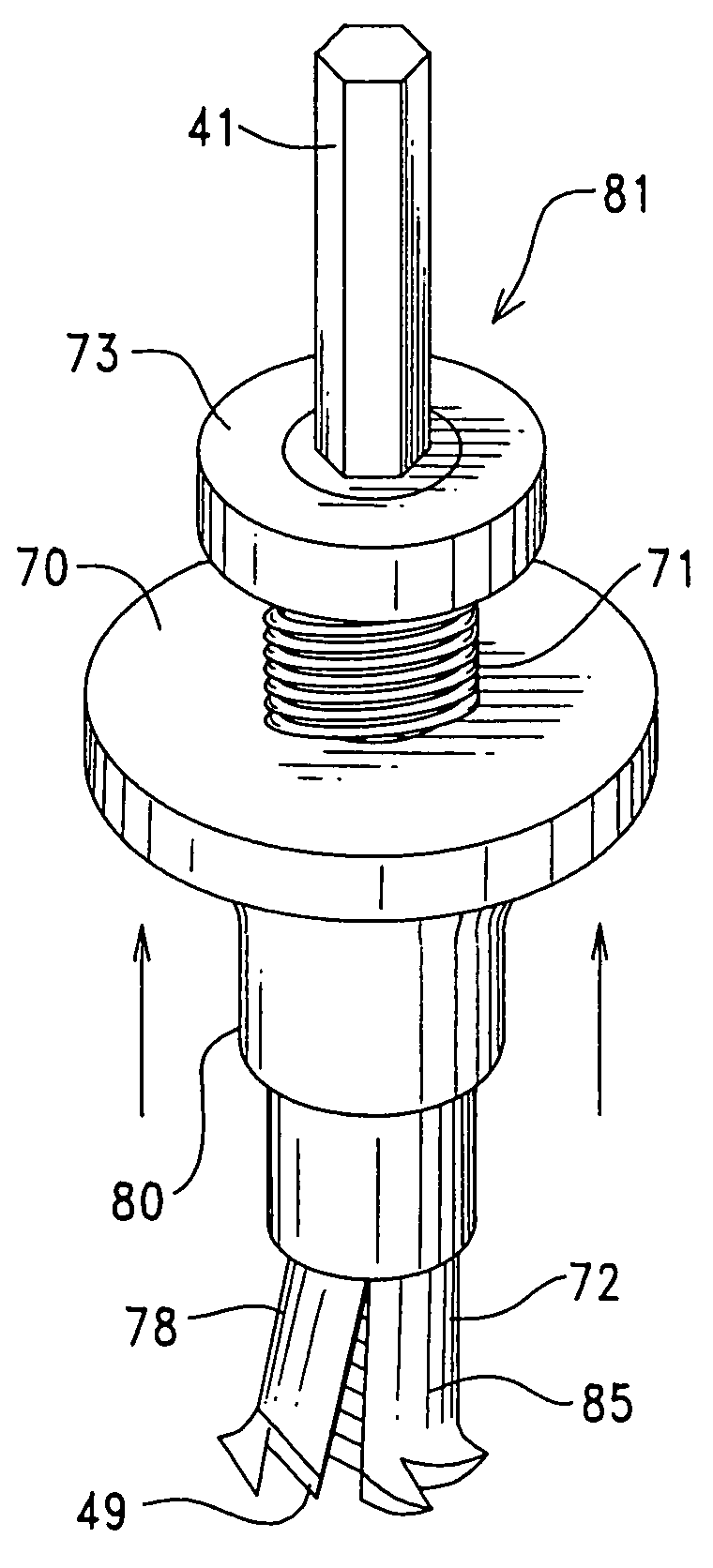Methods for extracting fasteners from a host material
a technology of host material and fastener, which is applied in the direction of wrenches, manufacturing tools, crowbars, etc., can solve the problems of increased building cost, decreased building quality, and product unusability, and achieves the effects of saving labor, reducing building costs, and reducing construction costs
- Summary
- Abstract
- Description
- Claims
- Application Information
AI Technical Summary
Benefits of technology
Problems solved by technology
Method used
Image
Examples
Embodiment Construction
[0050]A first embodiment 40 of the apparatus of this invention is illustrated in FIGS. 1 through 4. Apparatus 40 includes shank 41 adapted for application with a selected driver / source imparting rotational motion. Shank 41 is preferably polygonal, but may be cylindrical, and with a cross-section proportioned to fit into the jaws of a standard drill chuck to fix apparatus 40 rotationally and axially. Collar 42 may be provided at shank 41 and above neck 43 so that a pry bar or the like may be positioned adjacent to neck 43 to apply a linear force at bottom surface 44 of collar 42 to lift apparatus 40 as a secondary aid to removal of a fastener where necessary. Collar 42 is preferably a circular shape to provide a flange projecting from neck 43 that is uniformly accessibly from any direction or rotational position of apparatus 40 about its longitudinal axis, as well as to avoid unnecessary interference with adjacent objects.
[0051]Fastener engaging member 45 extends from one end of shan...
PUM
| Property | Measurement | Unit |
|---|---|---|
| rotation | aaaaa | aaaaa |
| diameter | aaaaa | aaaaa |
| relative movement | aaaaa | aaaaa |
Abstract
Description
Claims
Application Information
 Login to View More
Login to View More - R&D
- Intellectual Property
- Life Sciences
- Materials
- Tech Scout
- Unparalleled Data Quality
- Higher Quality Content
- 60% Fewer Hallucinations
Browse by: Latest US Patents, China's latest patents, Technical Efficacy Thesaurus, Application Domain, Technology Topic, Popular Technical Reports.
© 2025 PatSnap. All rights reserved.Legal|Privacy policy|Modern Slavery Act Transparency Statement|Sitemap|About US| Contact US: help@patsnap.com



